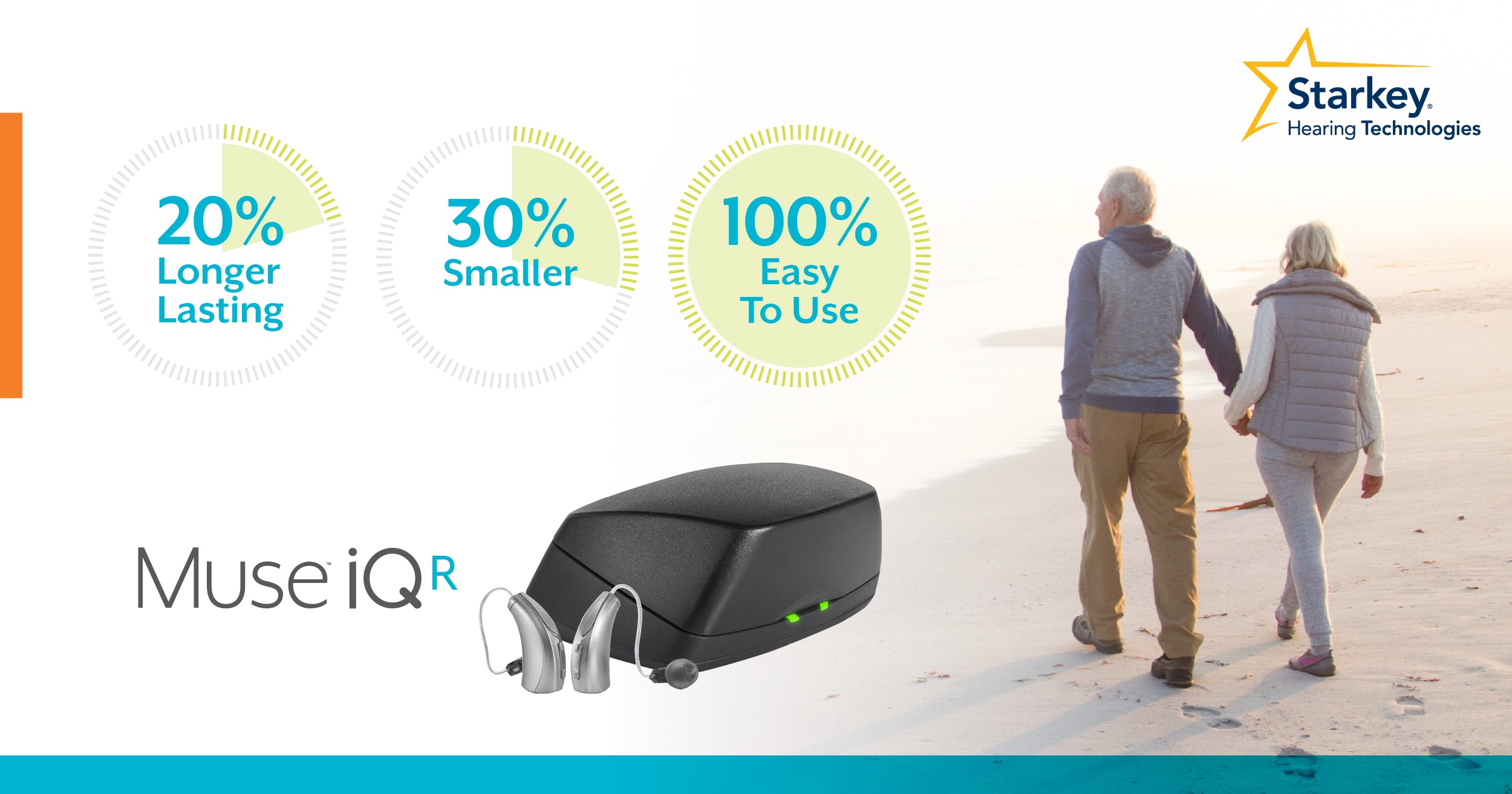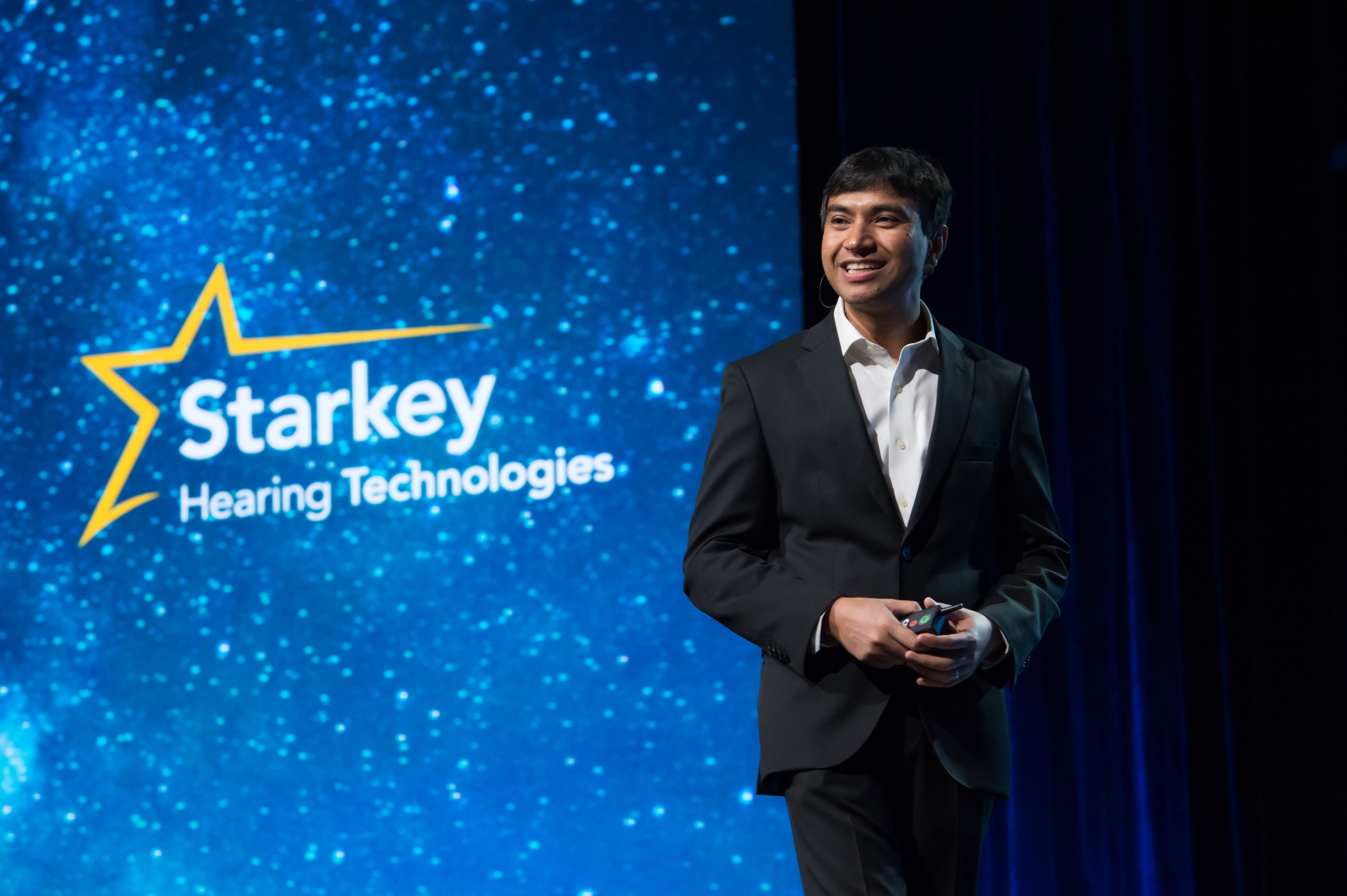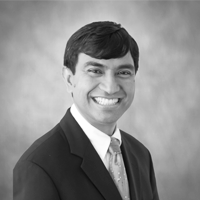Future Hearing Aids to Include New Applications of AI, Sensors, and other Innovations to Create Multi-purpose Ear-level Technology
AudiologyOnline: Welcome, Achin. Please tell us about your background and how you came to join Starkey Hearing Technologies.

Achin: Prior to joining Starkey, I was at Intel for nearly 17 years. I joined Intel after completing my Ph.D. and held a number of executive positions over the years. Most recently, I was vice president and general manager for Intel’s perceptual computing group. Under my supervision were Intel's businesses and products, artificial intelligence (AI), 3D sensors, drone business, as well as robotics and virtual reality products. It was an executive level position at a Fortune 500 company, and I was doing very well and had no intention on leaving.
I received many calls from recruiters over the years. Then, last summer, a recruiter called me about a position as chief technology officer and executive vice president of engineering at a privately-held medical device company called Starkey Hearing Technologies. I told the person that I wasn’t interested, but the name of the company kept repeating in my mind after I hung up the phone.
As it turns out, I learned about Starkey in one of my business classes in graduate school. One of my assignments was to write a white paper contrasting professional public companies and professional private companies that had a common thread. I picked two public companies in the computer domain — Intel and Microsoft — both of which had passionate founders who are experts in technology. From the private company sector, I picked Bose because I knew of professor Amar Bose. As I researched a second privately-held company in the audio domain, I picked Starkey, founded by Bill Austin.
I called the recruiter back, and asked, “Did you mention the position you are recruiting for is at Starkey, Mr. William Austin's company?" He said, “Yes. Do you want to talk to him?" Of course, I was very excited to meet with Mr. Austin.
I met with Mr. Austin, not as an interview, but to talk about our work. Mr. Austin is doing good work to better humanity. All my life, I've been passionate about developing technologies such as sensors and artificial intelligence. My focus at Intel was to use these technologies to make smarter machines or more intelligent machines, which was awesome, as the world is getting smarter. But Mr. Austin came to me saying, "Do you want to use the same technology — instead of focusing on making more intelligent and smarter machines — to help people perceive and understand the world better?" That was an emotional call — to work for Starkey and use new technologies to redefine what a hearing aid is, and to help more people lead better, more fullfilled lives.
It was a difficult decision to leave an executive career at Intel, so my wife and I made the decision together. We saw that Starkey is not just working on products for the monetary benefits, but their fundamental driver is to help humans lead better lives. So I made the move from working to enhance machine perception, to working toward augmenting human perception.
AudiologyOnline: That’s a great story. Given your background and experience at Starkey Hearing Technologies so far, what do you see as the outlook for these technologies, like sensors, when it comes to hearing solutions?
Achin: Before joining Starkey almost six months ago, I spent some time looking at the landscape of the industry. By the end of 2017, we set our eyes on a strategy to continue redefining hearing aids. I laid this out at the recent Starkey Expo in January. As part of this strategy, I’m making several key commitments to our customers.
First, we will make better hearing aids in the future than we do now. Coming from outside the industry, I was amazed at the low penetration rate of hearing aids. Very few people who need hearing aids actually use them. We have to continue to make our products better in every way — sound quality, form factors, connectivity, battery life, etc. Next, we must redefine the hearing aid to make it a multifunctional health monitoring device.
AudiologyOnline: How will we get from hearing aids of today to multifunctional health monitoring devices?
Achin: Let me draw a parallel to another technology — telephones. Twenty or so years ago, dial telephones were a single-purpose device. You used a phone to make a phone call — that's all you could do. As phones became smaller and mobile, like the original flip phone, more people started buying phones. But, phones were still a single-purpose device that could only be used to make a phone call.
Today's phone, whether it's an iPhone or an Android, is a multi-purpose, multifunctional device. Yes, you can make a phone call, but it is also your web browser, texting device, gaming device, an entertainment device for watching YouTube videos or listening to music and a GPS device, so the phone has become a multi-purpose, must-have, companion device because of all of these new capabilities.
How did the phones evolve to their present iterations? Two things enabled this: sensors and AI. The hearing aid landscape looks like the phone landscape 25 years ago. Hearing aids today are a single sensor that takes sound and converts it into an electrical signal, basically a sound sensor. Currently, their single-purpose is to amplify sound for hearing-impaired people.
The path forward lies in the opportunity to turn the hearing aid into a sensor-rich, multi-purpose hearable device. To describe this new device, we came up with a new term, "Healthable," which is “health” plus “wearable.”
AudiologyOnline: What kind of sensors are you envisioning?
Achin: The first miniature sensors will be inertial sensors in hearing aids, which allow the user to control the device by tapping it. We are already working on this and will launch our first later this year. Inertial sensors include accelerometer and gyroscope microelectrode mechanical sensor devices. In your phone, these sensors allow you to know which way you are holding the phone. You use an inertial sensor for complementing the body's vestibular sensors. With an inertial sensor in a hearing aid, you can truly augment the human vestibular system for balance and activity tracking.
An inertial sensor in the hearing aid allows physical activity tracking. Studies have found by exercising just 20 minutes a day for five days a week, you reduce your chances of cancer, as well as reduce your risk of stroke and dementia. We know there are benefits of walking, but not many older people have a fitness tracker. Now, hearing aids will become a physical activity tracker. They will tell you how many steps have you taken and you can set a goal. It will tell you, "You’ve only taken 2,000 steps today, which is only 20 percent of your goal — would you like to walk a bit more?"
An inertial sensor in a hearing aid can also indicate fall detection. Every 11 seconds, an older adult is treated in the emergency room for a fall-related injury. Every 19 minutes, an older adult dies because of a fall-related injury. Imagine a hearing aid that automatically detects the fall with sensors and AI, and alerts the patient’s loved one. We are very excited about being able to bring this automatic fall detection, an amazing value, to our hearing aid patients. In the future, we'd like to also predict falls, not just detect them. By utilizing artificial intelligence, we should be able to quantify deterioration or changes in people's gait and predict their propensity of falling down.
Starkey is also working on advanced sensors, such as heart rate. In my view, this is the first step towards redefining hearing aids to turn them into a gateway to health and wellness. Yes, hearing aids will help you hear better, but they will also truly help you live better because of the many other health benefits and the value they will provide.
AudiologyOnline: Fascinating! What are some future uses of AI in hearing aids?
Achin: There are so many practical applications of AI in hearing aids. The world around us is on fire with applications of AI, and the hearing industry has not yet tapped into all these amazing technical advances. For example, AI could bring language translation possibilities to hearing aids. Let's say you visit another country and you don’t speak the language. You should be able to use the device and tap into the power of AI for real time language translation in your ear.
AudiologyOnline: It’s exciting to hear about the future of the technology. Let’s switch gears and talk about the new Muse iQ Rechargeable. What makes this new solution unique?

Achin: There are a number of things I'm excited about with the new Muse iQ Rechargeable. Today, consumers are very used to recharging electronic devices. This new generation of hearing aid patients want devices that are easily rechargeable, rather than requiring batteries that need to be thrown out and replaced.
The Muse iQ Rechargeable is our first RIC device with a lithium-ion rechargeable battery. It's the state-of-the-art in the industry in terms of rechargeability. This is the industry's smallest rechargeable hearing aid. Based on Starkey’s award-winning Synergy platform, the Muse iQ Rechargeable offers best-in-class features including 30 plus hours of use with streaming and fast, full-day charging in less than three hours. It also has automatic environment classification utilizing artificial intelligence. The BTE Power Plus has high gain, as well as water and wax protection capabilities. The Muse iQ is a step forward for Starkey in terms of the next generation of hearing aids. It’s a remarkable consumer electronic system.
AudiologyOnline: Thanks for that overview. Last question – what was your impression at your first Starkey Expo?

Achin: I’ve been to many corporate events over the years, including very elaborate events given by large global electronics companies. I found the Expo to be different in a few ways. What struck me most was the attitude of the over 3,000 customers in attendance. I realized they were truly partners who are rooting for our success. A number of people were cheering during presentations about our technology, and there were even standing ovations. I spoke with many customers throughout the Expo who were just as excited as we are about all of the new developments. It felt like a big family — customers who share our enthusiasm for bringing these capabilities to market, because it's a win-win situation for both sides.
AudiologyOnline: Thanks for your time today, Achin, and we look forward to further updates on all the new developments.
For more information, please visit Starkey Hearing Technologies or the Starkey Partner Page on AudiologyOnline.


